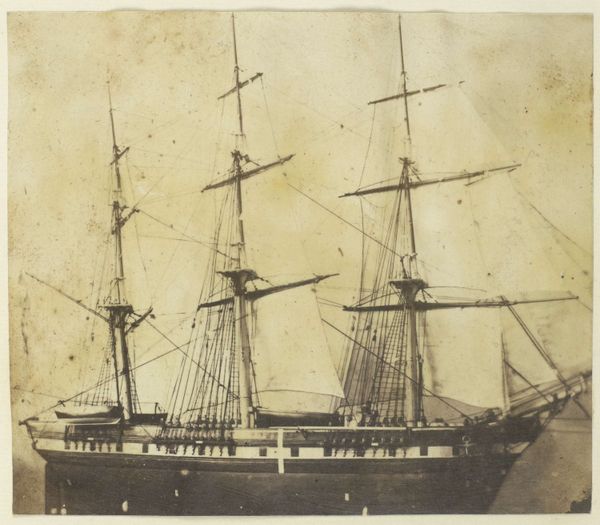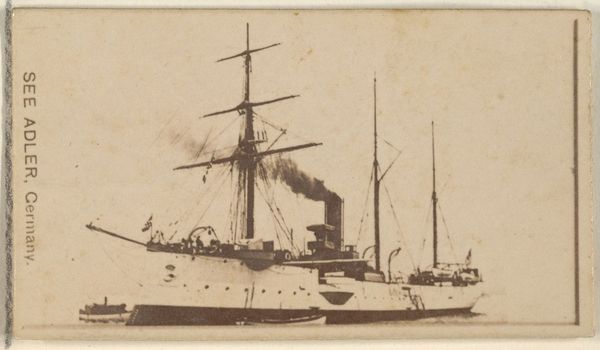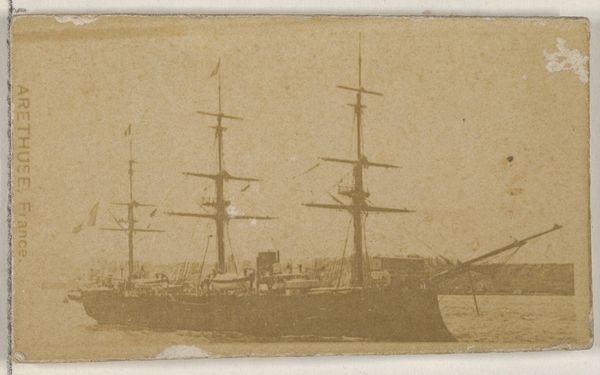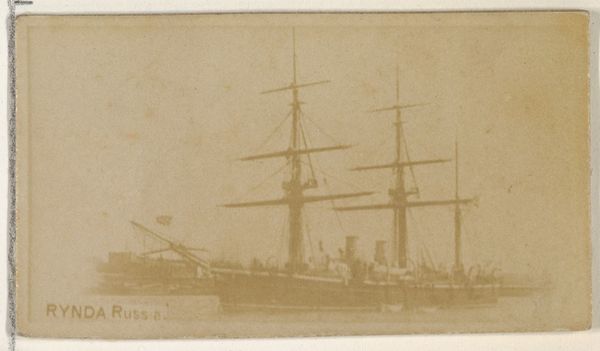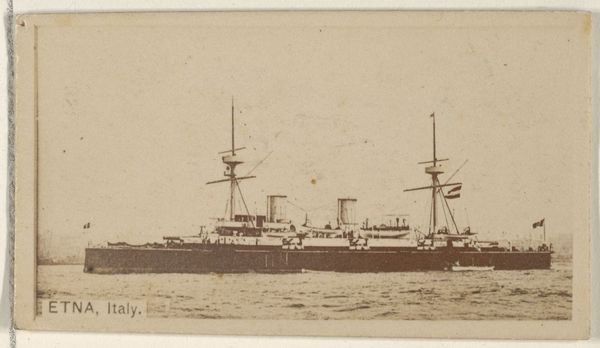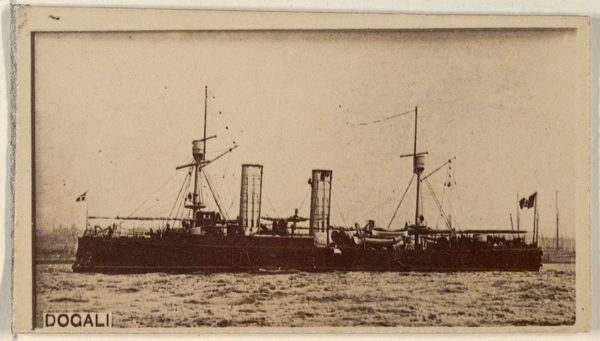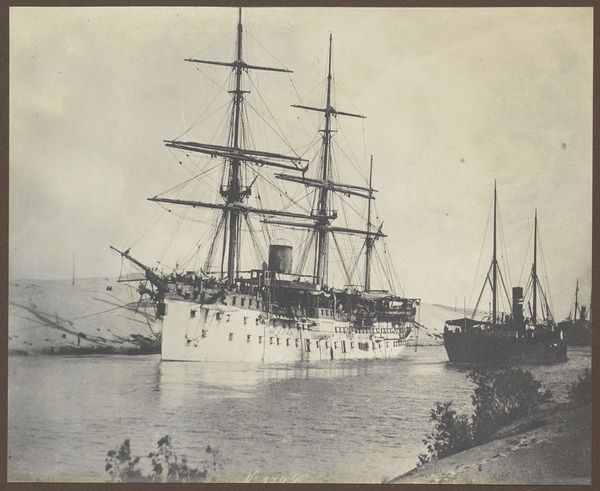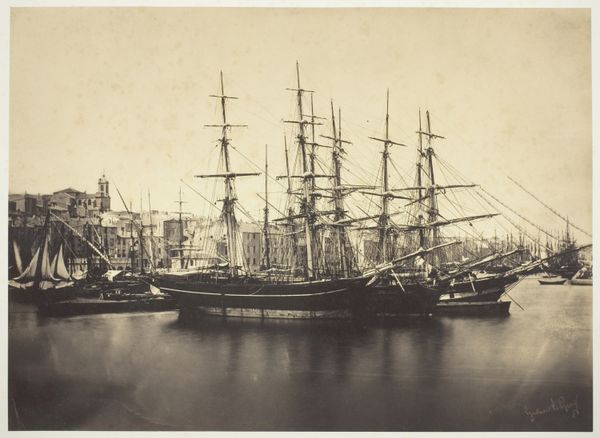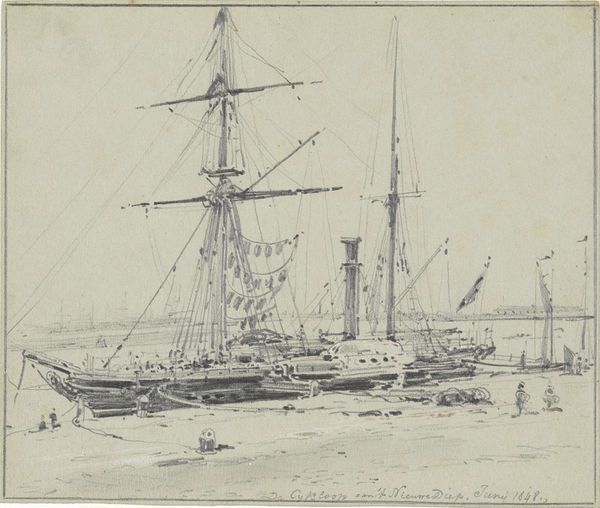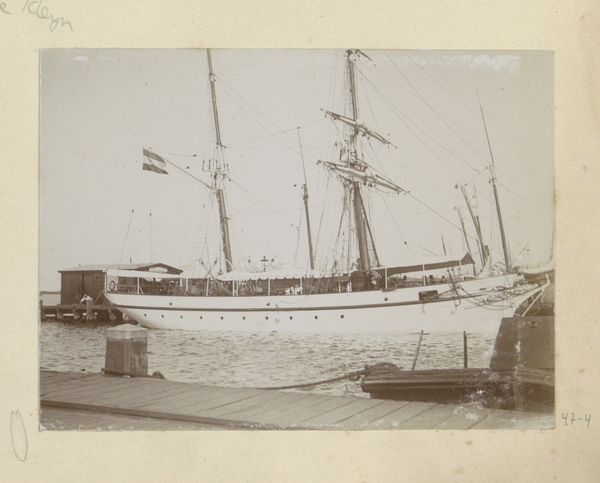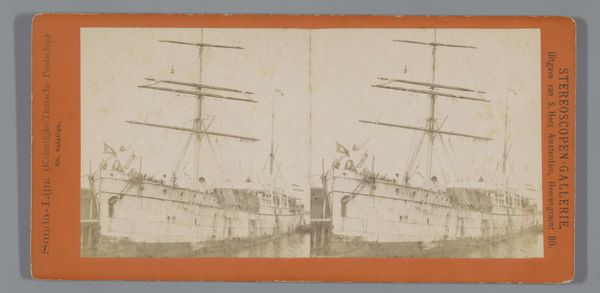
Aquidaban, Brazil, from the Famous Ships series (N50) for Virginia Brights Cigarettes 1895
0:00
0:00
drawing, print, etching
#
drawing
# print
#
etching
#
etching
Dimensions: Sheet: 1 1/2 x 2 5/8 in. (3.8 x 6.7 cm)
Copyright: Public Domain
Curator: What a curious little image. My first impression is that there’s a remarkable stillness for something that depicts a warship. It’s…elegant, almost? Editor: Indeed. We’re looking at "Aquidaban, Brazil," from the "Famous Ships" series, made around 1895 by Allen & Ginter. The medium here is quite interesting—it's an etching, reproduced as a small print. More specifically, it came as a collectible insert in packs of Virginia Brights Cigarettes. Curator: Cigarettes, you say? So this miniature technological marvel was intended to boost tobacco sales? Interesting choice to couple leisure with military prowess. What would possessing such knowledge and potential influence represent for consumers at the time? Editor: That’s exactly the intersection I find so fascinating! Consider the mass production, and the mass consumption it fed into. The etching process, even reproduced, required skilled labor, yet it became ephemera, consumed and often discarded. The packaging, the labor, and even the ink contribute to a rich account of its time. Curator: Absolutely. The image itself, with its fine lines painstakingly etched, presents a very clean, precise image of modernity, which is directly at odds with the often-chaotic and messy nature of actual maritime conflicts, and it romanticizes imperialistic activities. What type of social narrative was promoted in such a manner? Editor: I agree. This was part of a larger cultural phenomenon of idealizing military might. The image reinforces the idea of national power being intricately linked to tobacco use; this association emphasizes and encourages commercial imperialism and global expansion that we can track by analyzing advertisements like this. Consider how imagery and these capitalist ideals circulated and helped manufacture the social license to expand in Brazil specifically. Curator: The way the print flattens the image also diminishes the implied threat of such a machine. Its size, too, invites handling and collecting—almost taming it. It strips it of power in some strange way, given that most would ultimately throw them away. I never considered cigarettes to be so powerful, let alone the material production chain connected to these capitalist ideals. Editor: Precisely. It is the life of the object within its historical context that gives it so much contemporary cultural significance, both from the image of technological achievement, to what those things cost those without any power in this capitalistic ecosystem. Thanks for pointing out the strange ways the image renders the Aquidaban defanged—I wonder if they realized that potential irony.
Comments
No comments
Be the first to comment and join the conversation on the ultimate creative platform.


